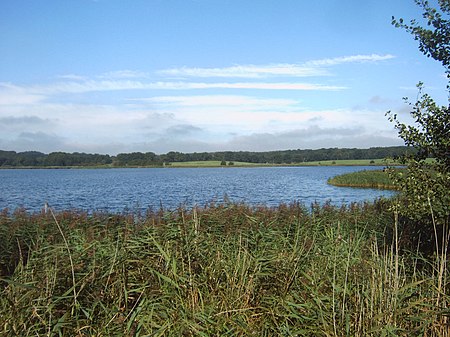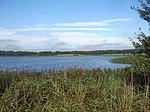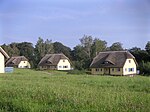Wreechener See Nature Reserve

The Wreechener See Nature Reserve (German: Naturschutzgebiet Wreechener See) is a nature reserve in the German state of Mecklenburg-Vorpommern. It lies 2 kilometres south of the town of Putbus and has an area of 72 hectares. It was placed under protection on 12 September 1990 as part of the creation of the Southeast Rügen Biosphere Reserve. The purpose of its designation as a nature reserve is to preserve a lagoon-like cove (or bodden) in the Bay of Greifswald as one of the last regional quiet areas for resting water birds. The Wreechener See also has areas undergoing natural silting up that support special communities and are breeding grounds for rare bird species. Adjacent wet meadows are extensively used. Nearby villages are Wreechen, immediately to the east, Krakvitz and Neukamp. The cove is linked to the Bay of Greifswald by a short narrow channel spanned by a wooden road bridge. The condition of the reserve is only classed as satisfactory, because the water condition is affected by discharges of agricultural fertiliser. In 1997, there was mass fish mortality due to the lack of oxygen in the water of this hypertrophic lake. The macrophyte flora almost entirely disappeared, but has recolonised the lake in several areas. Reed continues to be harvested for thatch within the reserve. In the north of the reserve there is a refuge hut with a good view of the lake and the Baltic Sea beyond. The road from Neukamp to Wreechen runs immediately along the eastern border of the reserve. According to EU law, the area is a Special Area of Conservation as well as a Special Protection Area for birds.
Excerpt from the Wikipedia article Wreechener See Nature Reserve (License: CC BY-SA 3.0, Authors, Images).Wreechener See Nature Reserve
Neukamp,
Geographical coordinates (GPS) Address Nearby Places Show on map
Geographical coordinates (GPS)
| Latitude | Longitude |
|---|---|
| N 54.33054 ° | E 13.45808 ° |
Address
Neukamp 22c
18581
Mecklenburg-Vorpommern, Germany
Open on Google Maps









